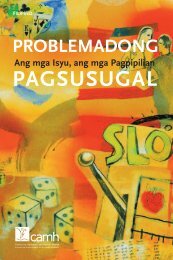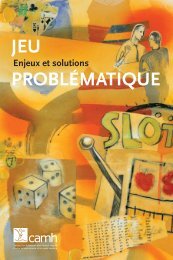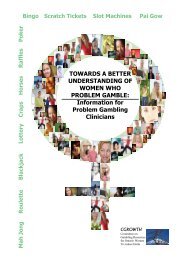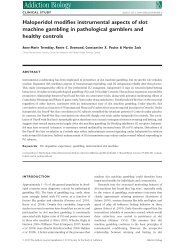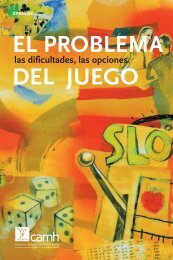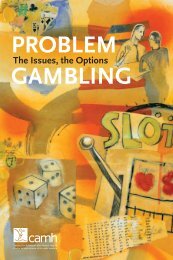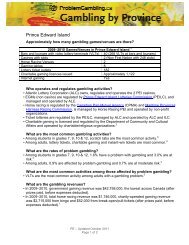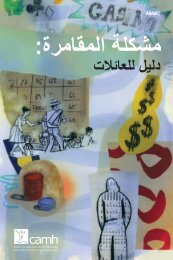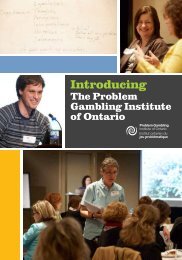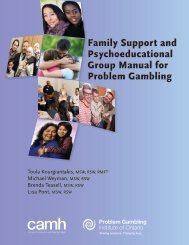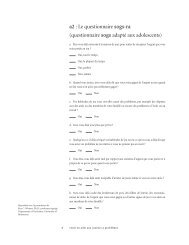Youth Making Choices: Gambling Prevention Program
Youth Making Choices: Gambling Prevention Program
Youth Making Choices: Gambling Prevention Program
Create successful ePaper yourself
Turn your PDF publications into a flip-book with our unique Google optimized e-Paper software.
Unit 4: What Is Problem <strong>Gambling</strong>?Appendix BTeacher Resource 2 p. 1Scenario: Context Is KeyProcedureHave students break into small groups and identify a behaviour that can lead to unanticipatedproblems. Record responses on flip chart.DiscussionAsk students to consider when these behaviours might lead to problems.ProcedureHave students in groups make a list of activities youth engage in.Have students share their answers with the class and record on flip chart. The list should includeactivities such as sports, videogames, eating, sex, substance use, gossip, sleep, hygiene, etc.Teacher draws out the continuum on the board. Students select a behaviour from the listthey made earlier and brainstorm activities and actions that fit in the different sections on thecontinuum. The continuum consists of the following:• No Activity• Activity within Healthy Limits• Serious Involvement• Activity with Some Misuse• Serious/Problematic Use• Pathological Dependence.Note most of the population is about 80 per cent no activity, and 10 per cent misuse, 10 per centserious > pathological.DiscussionThis may create a rich discussion on the blurriness of some activities and more clarity on others,for example, if the behaviour is “sex,” does “kissing only” count as No Activity, Activity withinHealthy Limits, Serious Involvement…? And if one of the people involved in kissing knows he orshe has mononucleosis, could kissing then be crossing the line? The teacher brings home thatthe “grey” areas become more clear when warning signs and impact on function occur.Kissing is taking a risk. All of life is risk. Likely the chances are low, but if you are kissingsomeone whom you know has herpes, mono, etc., what exactly does this mean? Do you engagein the behaviour despite the increased chances of risk? Then it could be a problem.Another example: “Smoking pot.” The continuum for this might involve no use, use only at aparty, use every weekend, use every day, use multiple times a day. The teacher can facilitatediscussion to get beyond merely the amount of use, e.g., “Would getting it from a friend versus adealer indicate problems?” etc. And then on to “What about missing school because student istoo high?” and so on.<strong>Youth</strong> <strong>Making</strong> <strong>Choices</strong>: <strong>Gambling</strong> <strong>Prevention</strong> <strong>Program</strong>www.Problem<strong>Gambling</strong>.ca4.18




